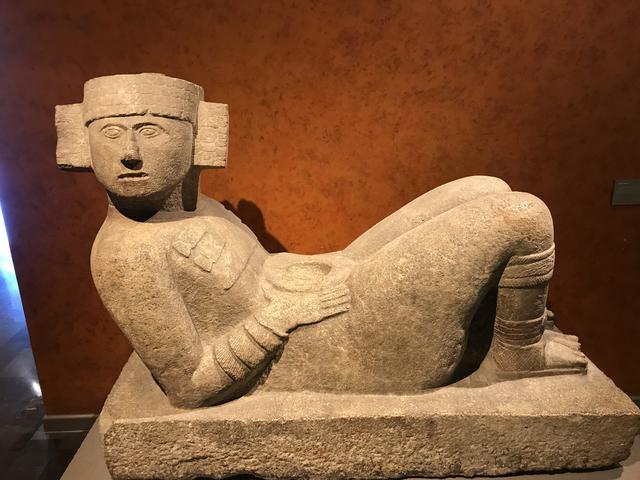Anthropology Museum
Don't miss anything
Chac-Mool Maya
The oldest Mayan sculpture, acquired by the museum in the 19th century, is the Chac-Mool, from the platform of the Eagles and the Jaguars at Chichen Itzá, which was discovered and obtained its name by the French-American explorer Auguste Le Plongeon In their eagerness to study it, they tried to take it abroad, but the governor of Yucatán at that time, Protasio Guerra, confiscated the sculpture and was sent to Mexico City.
The incredible Chac-Mool sculpture is a male human figure reclined backward, with legs raised, knees bent, feet generally placed on the floor, and the head turned left or right at right angles, holding a circular container or square in its belly, always looking towards the temple of the archaeological site in which it is located. This "great red jaguar", as it is translated of the Mayan, continues being until today one of the biggest mysteries about the Mayan and Toltec culture. Its name should not be confused with "Chaac", the Mayan god of rain.
The figure of the Chac-Mool has always been somewhat enigmatic but it is believed that he can represent a sacrificial victim, a priest, a man-god, a divine messenger or a particular deity.




